Coral Bay is about 160 kms south of Exmouth. We had been wondering when the Emu warning sign would become a reality
and on the way here we see our first Emu.
The Ningaloo Reef comes close to shore here, so close that you can hear the waves breaking on the edge of the reef. The whole area is a marine sanctuary and so the fish and coral are protected from the hunting instincts of the average Australian. The bay is very popular as a holiday spot, partly because of the lovely climate and partly because
it is very beautiful, sunsets in particular.
August is Manta Ray season and so two dives have been scheduled plus a snorkel with the Manta Rays (Paul) and a Glass Bottomed Boat trip to see the Coral (Pat).
Dive 1 – Lottie’s Lagoon
A routine dive over coral blocks and around numerous fish including a few sharks. Nothing remarkable but quite pleasant. A difficult entry in that a hose came off my BCD and I could not inflate it but eventually this was sorted out. The only thing of note was a Scorpion Fish hiding under a piece of coral and a number of strange “sack like” objects on the sea bed.
Snorkelling with Manta Rays
The Coral Bay area is one of four areas of the world known for the near permanent presence of Manta Rays. The type that live here are not the largest but still are impressive in size, being up to 4 metres between wing tips.
Because of their sensitivity to being disturbed and the possible over eagerness of divers to interact with them, access is very strictly controlled. Coral Bay has been declared a marine conservation reserve which means that there are very strict rules in force and certain sites within the reserve have additional rules applied to them – such as no diving, anchoring of boats, straying outside certain routes through the reserve etc.
A spotter plane was sent up to find the rays and this directed our boat to within 50 metres of where the rays were circling. On this occasion the rays were at a “cleaning station” – a particular spot in the reef where the rays go to have their teeth and gills and skin cleaned by other fish.
At one of these spots, the Manta Rays swim around in a fairly wide circle with their jaws open and the flaps in front of their mouths extended. As they do so, small cleaning fish dart in and clean (eat) the dirt from their teeth, gills, skin etc. They continue to circle until they are cleaned or hungry or something sends them off elsewhere.
We were divided into two groups, briefed on how to fin out to the snorkel site and how to behave when there, threatened with all sorts of repercussions if we broke the rules and then told to slide into the water and gently swim 100m to where one of the dive guides was waiting.
I swam out and as I was approaching the guide, looked down and beneath me was a large female Manta Ray gently gliding through the water but coming towards me, mouth open, cleaning fish clearly visible.
Immediately behind it (sometimes adjacent to it) was another large Manta Ray doing exactly the same thing.
After about five minutes, the groups swapped over and when we swapped back, we got at least 15 minutes hanging in the water looking down at these enormous animals ignoring us and lazily swimming round and round just beneath us (about 10 metres away).
Their only enemies are Tiger Sharks and humans.
Individual mantas are recognised by the unique pattern of spots on their underneath - no two mantas have the same pattern.
It was an amazing experience.
Dive 2 – Asho’s Gap
An interesting dive around a set of very shallow coral blocks which were in very good condition. Part way round I came across a shoal of fish which seemed to be ploughing the sea bed as these two pictures
show – you can quite clearly see the sand thrown up by the ploughing action. There were also a few reef sharks and a nurse shark hiding within a cave and not too happy at being disturbed by divers.
Some of the coral had started to die and collapse showing how it had grown during its life. The return leg of the dive was very hard due to an adverse current – never was the sight of a bow anchor line more welcome. My 83rd dive in just over two years was completed.
Pat’s trip on a Coral Viewing boat provided a dry way of seeing
the coral through a large glass window in the bottom of the boat.

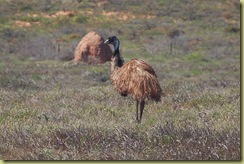
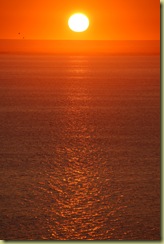

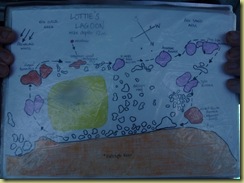
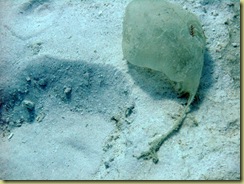
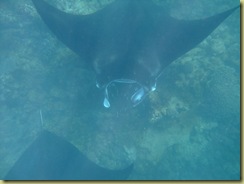
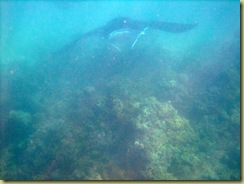
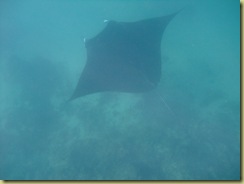
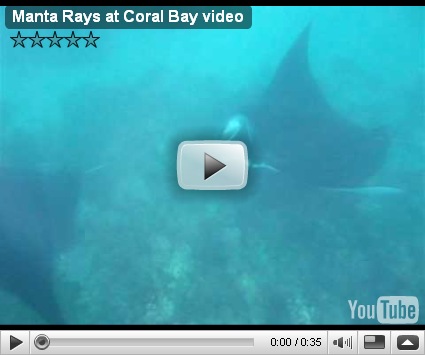
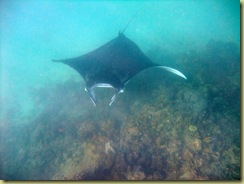
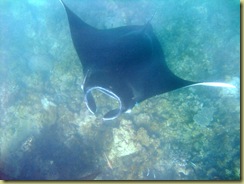
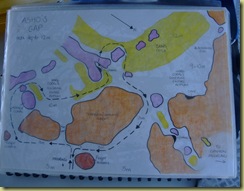
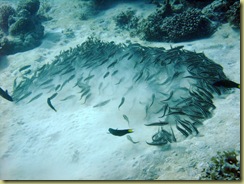
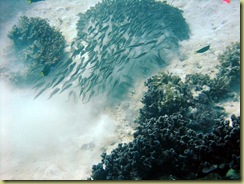
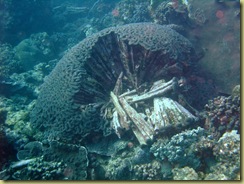
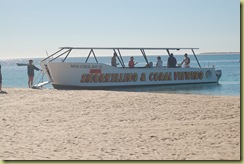
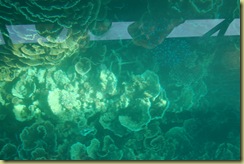
No comments:
Post a Comment